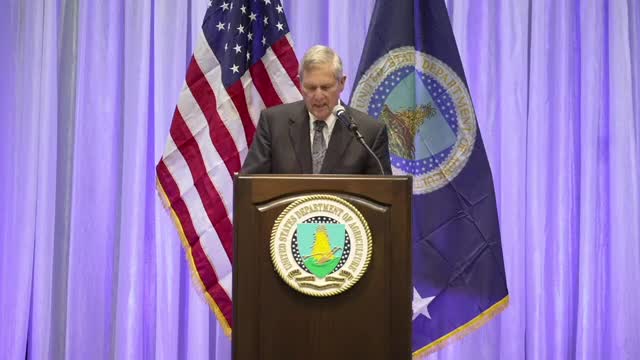Historic climate investment transforms agriculture across America
October 18, 2024 | USDA -NRCS, USDA, Executive, Federal
This article was created by AI summarizing key points discussed. AI makes mistakes, so for full details and context, please refer to the video of the full meeting. Please report any errors so we can fix them. Report an error »

In a recent government meeting, officials highlighted the significant strides being made under the Inflation Reduction Act (IRA), which is being hailed as the largest climate investment in history. The U.S. Department of Agriculture (USDA) is set to allocate an unprecedented $19.5 billion over five years to enhance conservation programs aimed at supporting farmers in adopting climate-smart practices.
Since the IRA's implementation began in 2023, these initiatives have already facilitated conservation efforts across 361 million acres of land. This year alone, the USDA's Natural Resources Conservation Service (NRCS) announced an additional $7.7 billion in financial assistance, more than doubling last year's funding and marking a historic peak in conservation investment.
The IRA also provides $300 million specifically for advancements in monitoring and verifying agricultural greenhouse gas emissions and carbon sequestration. This funding is expected to enhance the USDA's capabilities in estimating soil carbon and greenhouse gas emissions, ultimately fostering the growth of climate-smart markets.
Officials emphasized the importance of accurately quantifying climate benefits to ensure the success of these initiatives and their lasting impact on the agricultural economy. They acknowledged the contributions of various stakeholders, including farmers and organizations like Grow Climate Organics, which is working to improve urban farming resilience, and the Fisher Farms project in Indiana, focusing on sustainable beef and pork production.
The meeting concluded with a call to action for continued investment and innovation in climate-smart agriculture, underscoring the critical role these efforts play in supporting farmers and addressing environmental challenges.
Since the IRA's implementation began in 2023, these initiatives have already facilitated conservation efforts across 361 million acres of land. This year alone, the USDA's Natural Resources Conservation Service (NRCS) announced an additional $7.7 billion in financial assistance, more than doubling last year's funding and marking a historic peak in conservation investment.
The IRA also provides $300 million specifically for advancements in monitoring and verifying agricultural greenhouse gas emissions and carbon sequestration. This funding is expected to enhance the USDA's capabilities in estimating soil carbon and greenhouse gas emissions, ultimately fostering the growth of climate-smart markets.
Officials emphasized the importance of accurately quantifying climate benefits to ensure the success of these initiatives and their lasting impact on the agricultural economy. They acknowledged the contributions of various stakeholders, including farmers and organizations like Grow Climate Organics, which is working to improve urban farming resilience, and the Fisher Farms project in Indiana, focusing on sustainable beef and pork production.
The meeting concluded with a call to action for continued investment and innovation in climate-smart agriculture, underscoring the critical role these efforts play in supporting farmers and addressing environmental challenges.
View full meeting
This article is based on a recent meeting—watch the full video and explore the complete transcript for deeper insights into the discussion.
View full meeting